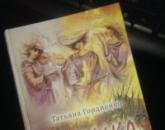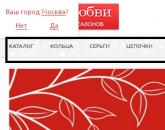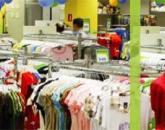Business plan for sales of thermal insulation materials. Insulation business
The business idea is to organize the production of penoizol - in demand building material used as a heater.
Due to its characteristics: excellent heat and sound insulation, low weight, high density, moisture resistance, as well as low cost compared to other heat-insulating materials, penoizol is one of the most popular building materials in its class.
Penoizol ( carbamide foam) — polymer material, used in construction work as a heater, as well as a soundproofing material.
This heater is produced prefabricated panels(according to predetermined dimensions), or in liquid form directly on the construction site.
Carbamide foam is made by mixing four components:
- tap water,
- foaming agent,
- curing catalyst
- urea-formaldehyde resin.
Required equipment
To start the production of carbide foam, it is enough to purchase the following equipment:
- Gas-liquid plant (in which the components are directly mixed) Compressor
- Forms (containers) for manufacturing
- Auxiliary equipment (ventilation, lighting, tools).
The cost of equipment for the manufacture of penoizol is very acceptable and even novice entrepreneurs can afford to purchase it. So a set of equipment (installation, compressor, molds) with a capacity of 6 cubic meters. meters will cost 55 thousand rubles, and with a capacity of 12 cubic meters. meters will cost 75 thousand rubles.
with cost information and technical specifications installations for the production of penoizol you can here.
Consider how profitable the organization of production of this type of universal insulation can become.
Feasibility study of the project
- Organizational form property: Individual entrepreneur
- Taxation system: Simplified tax regime, taxable base "income minus expenses", 15%.
- Manufacturing facility: rent 60 sq.m.
- Main buyers: Construction companies, construction shops, individuals.
- Number of staff: 3 people (1 one entrepreneur, 2 workers)
- Working hours: 8 hours per shift, 23 shifts per month.
- Number of teams: 1
Capital cost of production
Overall volume capital costs is 630,000 rubles, including:
- Equipment for the production of penoizol - 75 thousand rubles.
- Transportation costs for the delivery of equipment - 5,000 rubles.
- Vehicle Gazelle used 2008 (tent) - 300 thousand rubles (for delivery finished products)
- molds for making, auxiliary equipment, inventory - 50 thousand rubles.
- Other expenses (workshop repair, lighting, ventilation) - 100 thousand rubles.
- Purchase of material for production - 100,000 rubles.
Profitability calculation
* Revenue
Revenue is calculated based on market value for 1 cu. meter penoizol 800 rubles and the volume of production and sales of 690 cubic meters. meters (summer period).
The activity is seasonal, the peak of production falls on the period from May to October, in the winter season the volume of sales is significantly reduced. Payment construction companies carried out by bank transfer with deferred payment up to 90 days, payment for goods individuals occurs upon delivery, for cash.
To cover cash gaps resulting from the supply of products with deferred payment, individual entrepreneur factoring agreement with factoring company
** Production cost of 1 cu. meter penoizol is:
ROI: 7 months. For a quick payback, it is most optimal to organize production in April, with this option and the existing sales market, all costs will pay off in one season.
Acquainted with up-to-date information at the price of the PENA-3000 plant for the production of penoizol in the current market conditions(April 2015)
CONTENT
1 Summary 2 2 Goals and essence of the project 4 3 Marketing Analysis 6 3.1 General assessment of the market capacity of thermal insulation materials (TIM) in Russia 6 3.2 Forecast of demand in the St. Petersburg region 9 3.3 Main segments of the regional TIM market 9 3.4 Planned share of the company's products in the regional market 11 3.5 Competition and product prices 12 3.6 Marketing strategy 14 4 .Nomenclature of products and organization of production. 15 4.1 Nomenclature and parameters of the company's products 15 4.2 Production technology 16 4.3 Location of production 17 4.4 Provision of raw materials and materials 18 5. Organizational form of the enterprise. Project participants 18 5.1 Project implementation management. Management team. 19 6. Investment plan. 22 7 Production volume. 25 8 Product prices. 26 9 Production costs 26 9.1 Variable (direct) costs 26 9.2 fixed costs. 28 10 Personnel plan. 28 11 Depreciation periods for assets. 30 12 Conditions for the acquisition of raw materials and the sale of products. Productive reserves. 30 13 Financial environment 31 13.1 Taxes paid. 31 13.2 Accounting for inflation. 31 14 Project financing strategy 32 15 Calculation results. Project performance indicators. 33 16 Sensitivity analysis. 36 17 Risk analysis. 37 Appendix No. 1
.Forecast of profits and losses. 1 plan cash flows 6 Balance sheet 12 Appendix No. 2
Getting and repaying a loan 1 Account balance 2 Sensitivity analysis for a period of 36 months 3 Sensitivity analysis for a period of 120 months 4 Summary
The essence of the project is the creation in St. Petersburg of an enterprise for the production of thermal insulation materials (TIM) of a new generation to meet the needs of construction organizations in St. Petersburg and Leningrad region.
Thermal insulation materials produced by the domestic industry do not meet modern requirements for thermal conductivity, environmental and fire safety and a number of other indicators. Imported TIMs available on the building materials market ensure that modern requirements are met, however, the high cost of these materials prevents their widespread use.
Since 2000, the Gosstroy of Russia has introduced new, much more stringent requirements for thermal insulation of residential and industrial buildings. The fulfillment of these requirements on the basis of traditional materials or with the use of imported TIM will lead to a sharp rise in the cost of construction.
The production of thermal insulation materials envisaged by the project is based on the use of a new domestic technology for producing ultra-thin mineral fiber. The developed technology makes it possible to significantly reduce the cost of production and ensure the production of products that meet all modern requirements at prices 60 - 70% lower than the prices of imported products of similar quality.
The main raw materials for production are basalt and dolomite, the supply of which can be carried out by enterprises of Karelia and the Leningrad region.
In 2001, the project plans to set up the production of highly efficient domestic heat and sound insulating materials with a design capacity of 7,000 tons per year and increase output to 14,000,000 tons in 2005.
The company's products are designed for the needs construction companies St. Petersburg region and will satisfy 6 - 8% of the forecasted demand.
The production will be located on the existing premises and does not require new construction of production buildings.
The implementation of the project ensures the creation of 130 new jobs. The project has the support of the administration of St. Petersburg.
The contribution of the participants to the project implementation in the form of industrial buildings, infrastructure and know-how of production technology will amount to 44,070 thousand rubles. It is planned to obtain a loan in the amount of 70,000 thousand rubles to carry out pre-production work. The loan is requested in the form of a credit line at 25% per annum for a period of 3 years. The reality of the return of borrowed amounts is confirmed by the calculations of flows Money and calculations of profits and losses of the enterprise.
The project is profitable and cost-effective. The payback period of the project is 23 months. Over a period of three years, net present value will amount to 75.8 million rubles. According to the totality of integral indicators, the project meets all the main criteria used to determine the feasibility of project financing.
The work on this page is presented for your review in text (abbreviated) form. In order to get a fully designed work in Word format, with all footnotes, tables, figures, graphs, applications, etc., just DOWNLOAD it.
Ecowool or cellulose wool is a relatively new type of building material for our country, which is used as a heater. This material is most widely used in the USA and European countries, where the annual increase in the production of ecowool is 25-30%.
Experts are confident that the same trend will be present in the Russian market, the main thing is to correctly present the product and explain to consumers what the main advantages of this material are. The most important thing is the environmental friendliness of the insulation and the use of secondary raw materials for its production: 80 percent of the composition is recycled cellulose (waste paper), the remaining 20 is an antiseptic (boric acid) and flame retardants.
In addition to being non-toxic to health and harmless to environment ecowool perfectly retains heat, has high fire resistance and sound insulation, does not rot, is economical in consumption, is versatile in use, does not create niches and voids when filling, since it is not a roll or tiles, like other heaters, but powder- fibrous mass.
Disadvantages of ecowool
The disadvantages include, perhaps, only the fact that for the insulation of walls and surfaces with ecowool, special equipment, with which the material is sprayed onto the walls and blown into niches. Although, on the other hand, this technology allows you to work with hard-to-reach areas, uneven surfaces and complex structures, which is also a definite plus for using cellulose insulation.
So far, cellulose wadding is not so common, and, accordingly, there is practically no competition in this area, in addition, recycling is a useful and profitable business, so you can build a profitable, promising business in the production of ecowool.
The specifics of the ecowool production business
The technology for the production of cellulose insulation consists of several stages: the main raw material - waste paper - is packed and sorted by hand in order to get rid of large foreign objects and those types of paper that are not suitable for the manufacture of ecowool. Then there is grinding in a crusher, separation of paper clips and staples with a magnet, repeated cutting takes place, and antiseptic and fire retardant are added to the resulting mass. The final grinding to particles of 5-6 mm and the formation of fibers takes place in a special disperser apparatus.

Equipment for the production of ecowool
An automatic line for the production of cellulose insulation with a production capacity of 150 kg per hour will cost $47,000. It consists of such units: shredder, disperser, dryer, separator, industrial fan, transport belts, containers and dispensers for antiseptic, packer.
To date, the market equipment is presented in a wide range. The cost depends on the capacity, country of origin. The most budgetary are domestic production lines, the most popular and well-established are Finnish mini-factories, producing up to 2 tons of ecowool per hour, but they also require a larger area for placement (from 350 to 500 sq.m). High-power equipment is estimated at 150 -187 thousand dollars.
room
For a production workshop with small production volumes, a room of 200 sq. meters. The line itself will take no more than 50 square meters. meters, the rest of the area will go under the warehouse of raw materials and finished products.
Staff
Where to get money to start own business? This is the problem faced by 95% of new entrepreneurs! In the article, we have revealed the most relevant ways to obtain start-up capital for an entrepreneur. We also recommend that you carefully study the results of our experiment in exchange earnings:
The number of employees is directly related to production volumes. The mini-line for 150 kg per hour can be served by 2 workers. Since while the sales market is not as large as we would like, a lot of effort will be spent on finding customers and promoting products, it makes no sense to purchase expensive powerful equipment to avoid downtime.
With the development of a client base and an increase in income, low-power equipment purchased at the start can always be exchanged for a more productive one.

Do not forget that in addition to the direct production of ecowool additional source income can be installation and construction work on the application of insulation. This requires equipment - blowing installations and special barrels for wet spraying.
Thus, it is possible to provide a full range of services - from the provision of the material itself to its application. This increases the chances of business success. In addition, having such specific equipment available, it can be rented out to other manufacturers of cellulose insulation.
Another prospect for business development may be the production of cellulose briquettes, pellets, eco-slabs from recycled materials. The total cost of purchasing additional units will be 15,000-18,000 dollars.
Calculation of costs and benefits
The cost of manufacturing 1 ton of ecowool, taking into account wages, purchases of raw materials, payment utilities and other overhead costs is 140-150 $. The selling price of the same ton is from $625 wholesale to $900 retail.
Start-up capital for the implementation of business ideas for small production(up to 30 tons per month) - from 78 to 95,000 dollars. This includes such initial items of expenditure as:
— purchase of equipment $47,000;
- its delivery and installation - $ 7,800;
- purchase of raw materials and additives - 10,500-11,000 USD;
- rent, repair of premises (if necessary), other costs.
With uninterrupted operation and the presence of several large contracts with construction organizations, the payback period for even a small production will be 1-1.5 years, and net profit can reach $6,000 per month. But this is possible with active sales and under ideal conditions.
In fact, the most difficult thing in this business is to enter the market and make yourself known, since ecowool is still a curiosity, many construction organizations treat it with caution and distrust, like everything new. Therefore, it is important not only to bring to the market a high-quality product that meets all standards, but also to pay great attention and not save money on marketing research and promotion.
Experienced active sales specialists are very important, who will be able to convey to customers all the underestimated advantages of working with cellulose insulation and the technology itself, raise market awareness, and advertise the product.
Like any other materials and related materials, the production of ecowool is characterized by a certain seasonality. Active demand is observed from spring to autumn, a decline in winter. But at this time, as already mentioned, it is possible to refocus on the production of alternative sources of heat and energy - pellets, fuel briquettes.
This document is a model business plan production organization mineral wool and products from it price Moscow region |
Mineral wool is a porous fibrous mass obtained from melts of rock (basalt) rocks, metallurgical slags and other silicate components or mixtures thereof. Its structure consists of the finest mutually intertwining fibers, which are usually in a glassy state, as well as drops of a solidified melt.
In terms of their characteristics, mineral wool thermal insulation products are superior to other building thermal insulation materials.
The newly created enterprise is focused on the production and marketing thermal insulation boards based on mineral (basalt) wool for general construction insulation, insulation of external walls, roofs and floors, as well as for the manufacture of sandwich panels. In addition, it is planned to sell production waste (screening out of stone, screening out of coke, cast iron, defective mineral wool boards).
The marketing justification of the project used the data and conclusions of the prepared report Research.Techart Marketing research of the Russian mineral wool market (ver. 2) ( June 2011).
Key Assumptions in Business Plan Development:
- project implementation period - 66 months: from 07/01/2011 to 12/31/2016;
- the project is purely industrial; services for the delivery and installation of products are not included in the calculation;
- the entire volume produced is sold within a month of production; warehouse stocks of finished products are not provided;
- the project is financed in full by borrowed money(repayments on the loan are taken into account);
- all necessary types of raw materials and materials are purchased on the side;
- the business plan considers three scenarios for the implementation of the project:
* base (optimal): load factor production capacity - 90%;
* pessimistic: load factor - 70%;
* optimistic: load factor - 100%;
- in all scenarios, production is carried out around the clock, effective hours of production of finished products per year - 7,000.
Otherwise geographical location it is necessary to take into account the possibility of changing the following parameters:
- cost of land (plot) and capital construction;
- the cost of raw materials, materials and energy resources;
- personnel costs (payroll fund);
- the amount of environmental payments;
- other costs;
- sale price.
Business plan developed in accordance with the requirements UNIDO.
The target audience:
- potential investors;
- companies planning to enter the market;
- participants (manufacturers and suppliers) of the mineral wool market;
- manufacturers and suppliers of equipment for the production of mineral wool;
- participants in the markets of other heat-insulating materials (glass wool, expanded polystyrene, etc.);
- participants in the sandwich panel market.
The content of the business plan for the production of mineral wool
1. Resume
2. Description of the enterprise and industry
2.1. Company information
2.2. Industry Information
2.2.1. General information about the Russian mineral wool market
2.2.2. Main contributors Russian market mineral wool
2.2.3. External factors development of the Russian mineral wool market
2.2.4. The State of Consumer Industries
2.2.5. Forecast of the development of the Russian mineral wool market
3. Product Description
3.1. General information about mineral wool
3.1.1. Properties and characteristics
3.1.2. Areas of use
3.2. Types of products
4. Marketing plan
4.1. Description of the sales market. Characteristics of demand and consumers
4.2. Pricing principle
4.3. Sales of products
4.4. Consumer Engagement Strategy
5. Production plan
5.1. Location
5.2. Production plan
5.2.1. Main production equipment
5.2.2. Optional equipment, transport
5.2.3. Buildings and constructions
5.3. Raw materials and energetic resources
5.4. Calendar plan
5.5. Schedule for reaching design capacity. Sales chart
5.6. Personnel plan
5.7. Costs
5.8. Waste production. Environmental part of the project
5.9. Cost estimate. Break even
5.10. Planned improvements and evaluation of results
6. Management and organizational plan
6.1. Administration
6.2. Primary production
6.3. Technical service
6.4. Finished goods warehouse
6.5. Transport
6.6. Department of technical control
6.7. Administrative department
6.8. Trading house(sales department)
7. Financial plan
7.1. Accounting system, tax environment, assumptions
7.2. Project financing
7.3. Base Scenario
7.3.1. Financial indicators
7.3.2. Integral indicators investment efficiency
7.3.3. Sensitivity analysis
7.4. Pessimistic scenario
7.4.1. Scenario conditions
7.4.2. Main financial indicators
7.4.3. Integral indicators of investment efficiency
7.5. Optimistic scenario
7.5.1. Scenario conditions
7.5.2. Key financial indicators
7.5.3. Integral indicators of investment efficiency
8. Risk analysis
Profitability calculator for this business
Ready Ideas for your business

We continue to publish translations of articles by well-known Western business consultants. This time we present to your attention the translation of Guy Kawasaki's article "Go for the Gold".

Vending trade in live flower bouquets is a new business idea for the Russian market. Let's take a look at the pros and cons of this unusual look vending.

The production of overalls is an industry that is attractive for private investment, including for small and medium-sized businesses.


Successful will be the training that gives people something new, does not copy programs already available on the market, and really works. It can be difficult to develop such a concept, but in this case ...

Hair removal is a popular niche business in the beauty and health industry, the demand for which has increased markedly in recent years. You can open an office providing depilation services if you have 300 thousand rubles.

Pie delivery is a business that brings joy and a warm feast. The metropolitan residents have already experienced the beauty of home-delivered pies, and the province is just beginning to provide such a service.

According to experts, sales confectionery from 2014 to 2016 decreased by 12% in physical terms; per capita consumption decreased from 5.1 to 4.5 kg per person.
Popular
- The technical audit includes
- Technical audit of the enterprise and features of its providence
- Scrap steel construction specifications GOST Scrap steel construction specifications
- Requirements for the quality of sawdust used as a raw material in the production of fuel pellets - document types and sizes
- Business plan mini refinery distillation unit
- T shaped keys for hex bolts gost
- Mineral powder for asphalt concrete and organo-mineral mixtures
- The ten fastest lenses What does lens aperture mean
- Shift method What does shift schedule mean
- How to create an effective company slogan




